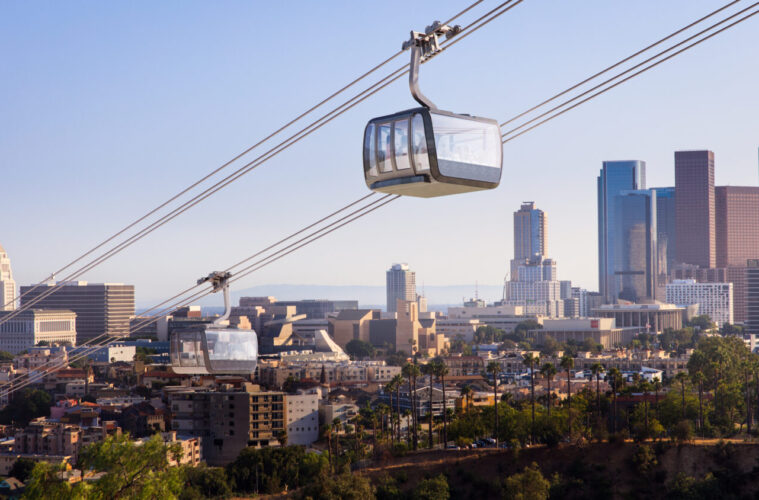Nearly five years ago, mockup images of an aerial gondola, hovering over Chinatown like an urban ski lift and making a beeline to Dodger Stadium, piqued the curiosity of Angelenos.
Since then, the Los Angeles Aerial Rapid Transit (L.A. ART) plans have slowly made their way to city and county officials, raising several questions about its environmental impact, and even more questions over the involvement of a former Dodger team owner who left Los Angeles in 2012 after a messy divorce and forced the sale of the team.
While the concept of an aerial gondola is not yet a common one, there have been successful examples in the skies of Medellin, Colombia; Mexico City, Mexico and in New York, but none of those previous sky rides have had the ambition of carrying 5,000 people per hour, on seven-minute rides, the way L.A.’s Dodger Stadium gondola would.
“It’s a proven mode of transit that works incredibly well,” former Los Angeles Mayor Eric Garcetti said while serving on L.A. Metro Board in 2022. “It’s been very good for a lot of people in more hilly cities, and it’s also helped workers and others access their transportation needs in a much more efficient way.”
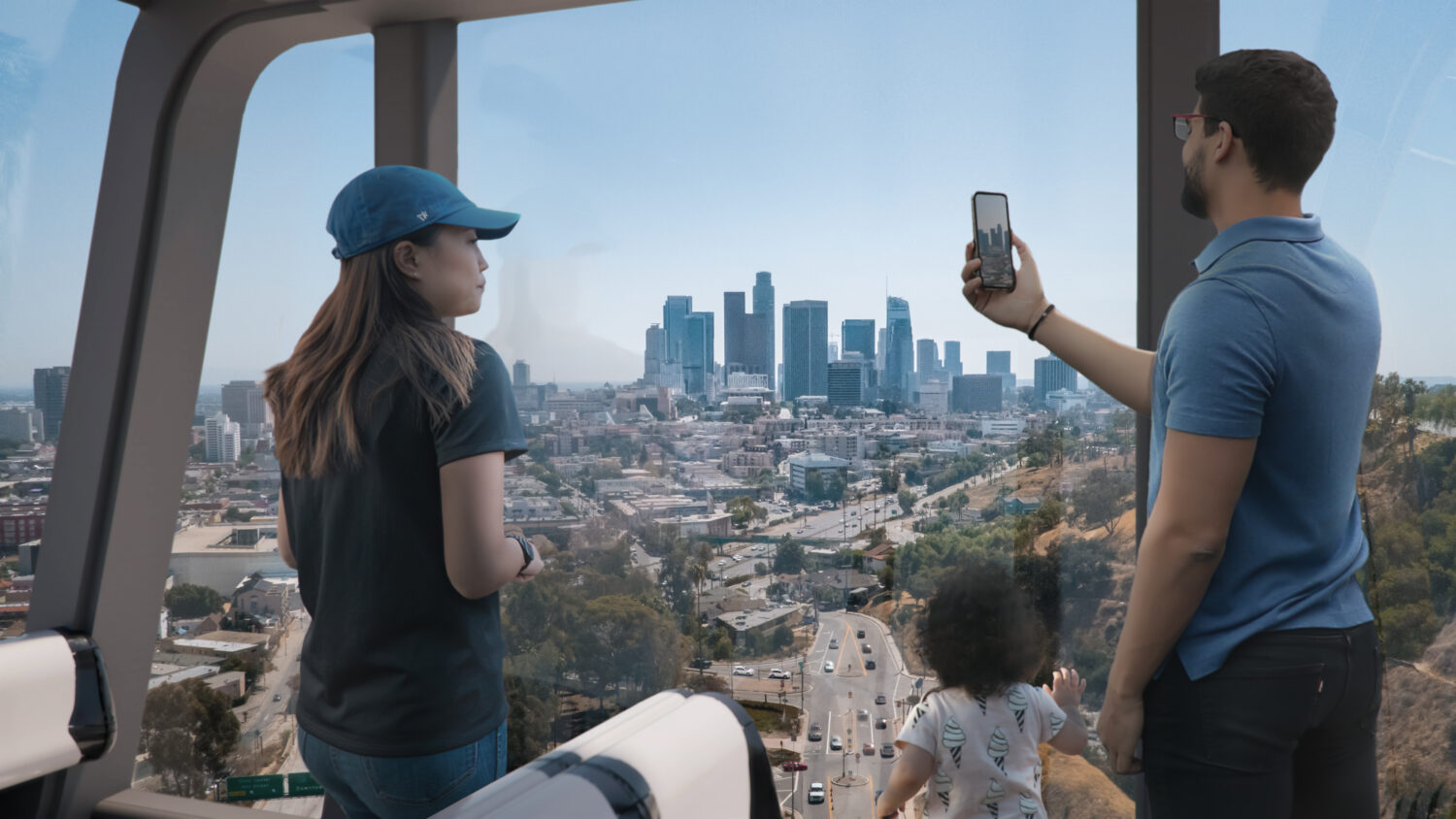
(Courtesy of LA ART)
Who is behind the gondola to Dodger Stadium?
As president, David Grannis is spearheading the L.A. ART gondola project for the newly formed nonprofit called Zero Emissions Transit (ZET). Heavily influencing a successful transportation system during the 1984 Summer Olympics in Los Angeles, as well as a pilot shuttle program that paved the way for the Dodger Stadium Express, Grannis has become a specialist in successfully launching public transportation programs.
“What drew me to the gondola, when you’re dealing with a major venue like this from a transit applicability standpoint, you want it to be effective,” Executive Director of Zero Emissions Transit David Grannis told L.A. Weekly. “It really provided the most capacity, the cleanest approach and really served that purpose of that venue, as well as it operating year-round to provide access to the park. It made the most sense.”
The organization is an extension of Climate Resolve and will be drafting a new way to create funding for the gondola project, considering it was previously being funded by former Dodgers owner and Boston businessman Frank McCourt, who is now only funding up to the pending approval of the draft environmental impact report (Draft EIR) by the L.A. Metro board.
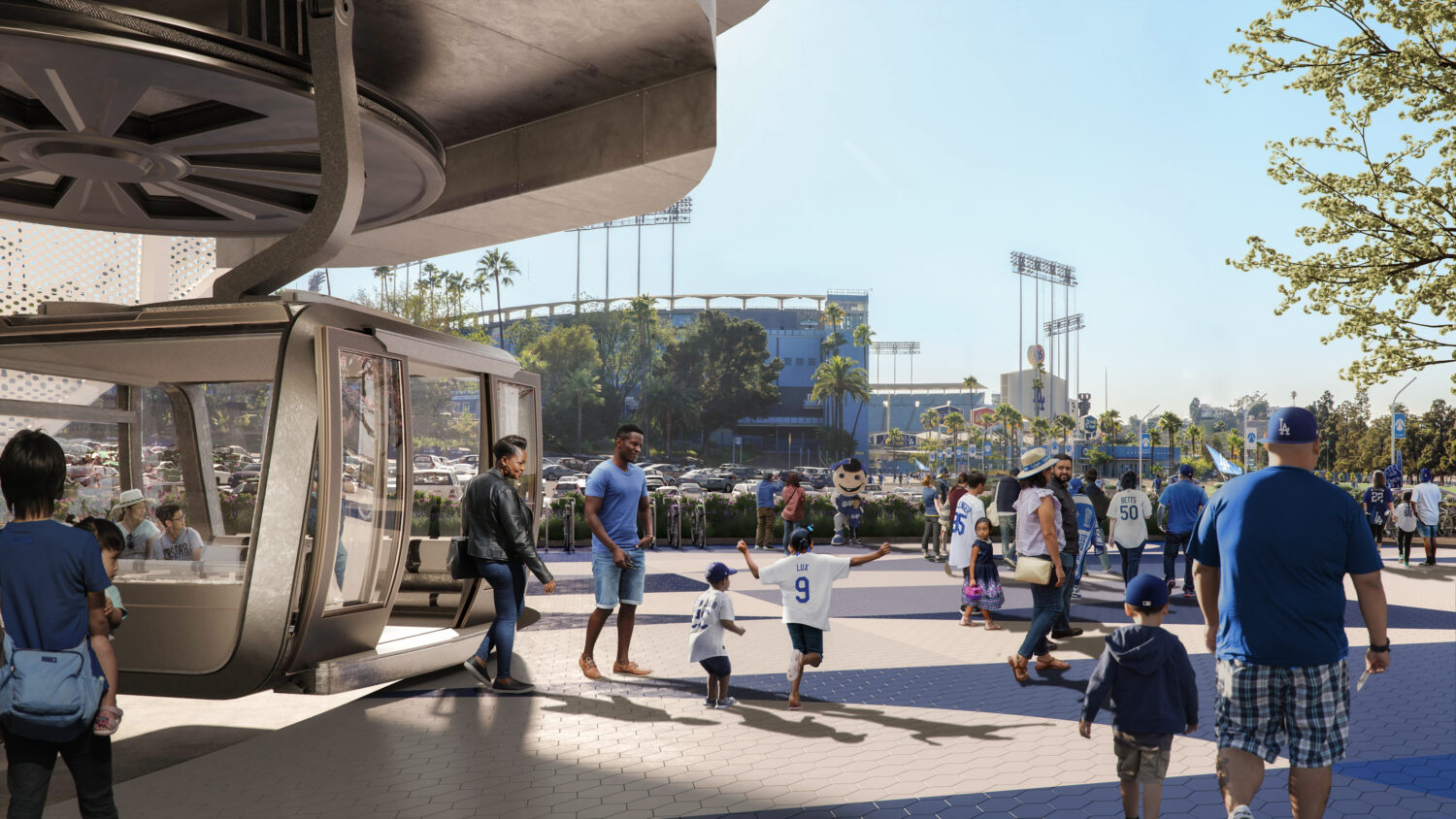
(Courtesy of LA ART)
Former Dodgers owner is quietly still around
McCourt, 69, has had a tumultuous relationship with the city of Los Angeles. He made the trek from Boston to Los Angeles in 2004, purchasing the Dodgers team from Rupert Murdoch’s News Corp., for $430 million. The change in team and stadium ownership left Dodger fans a bit worried, with whispers that the legendary stadium’s naming rights would be sold, ticket prices would be raised and the competitive team that McCourt inherited would look different under his regime.
Ultimately, Dodger Stadium remained Dodger Stadium, albeit its classic aesthetic soon became a haven for brands to plaster advertising on nearly every square inch of its architecture.
The team itself was at times competitive, but McCourt’s last two years as owner produced seasons most fans would like to forget.
With a struggling team and news of McCourt mired in a legal battle with ex-wife Jamie, Major League Baseball forced a sale of the Dodgers, with Los Angeles legend Magic Johnson and a group of investors swooping in to take over for a cool $2 billion.
While McCourt no longer owned the Dodger team, nor stadium, he managed to hold on to partial ownership of the parking lot property. It is no coincidence that the Los Angeles Marathon, which is run by the “McCourt Foundation,” always has its starting line at the Dodger Stadium parking lot, nor is it coincidence that the gondola will touch down there as a final destination.
The abandoned Dodger Stadium project
Through the lot, McCourt has found a way to keep himself in the minds of Angelenos for years past his departure. For that reason, a strong and loud opposition to the gondola project has formed in the city. It is not unusual to come across a “Stop the gondola” billboard or two while making your way through Lincoln Heights, or the 10 freeway, as the organization is making sure their distaste for the project is visible.
“The gondola is a project that will benefit a billionaire, Frank McCourt, and will not benefit the environment,” Jon Christensen, who is an adjunct assistant professor at the Institute of the Environment and Sustainability at UCLA, told L.A. Weekly. “The reason McCourt wants to build a gondola from Union Station to Dodger Stadium is that if he can provide a new mode of transportation to the stadium, he can reduce the number of parking spaces at the stadium and begin developing a luxury retail hotel, or entertainment complex there.”
View this post on Instagram
On the surface, Christensen’s claims may sound far-fetched, as the idea of the crowded Dodger Stadium parking lot, which often fills to the point of cars being parked in undesignated areas, certainly could not thrive as the location for an entertainment complex.
Christensen is referring to McCourt’s previous plans to build an entirely different entertainment experience right outside the Dodger Stadium walls.
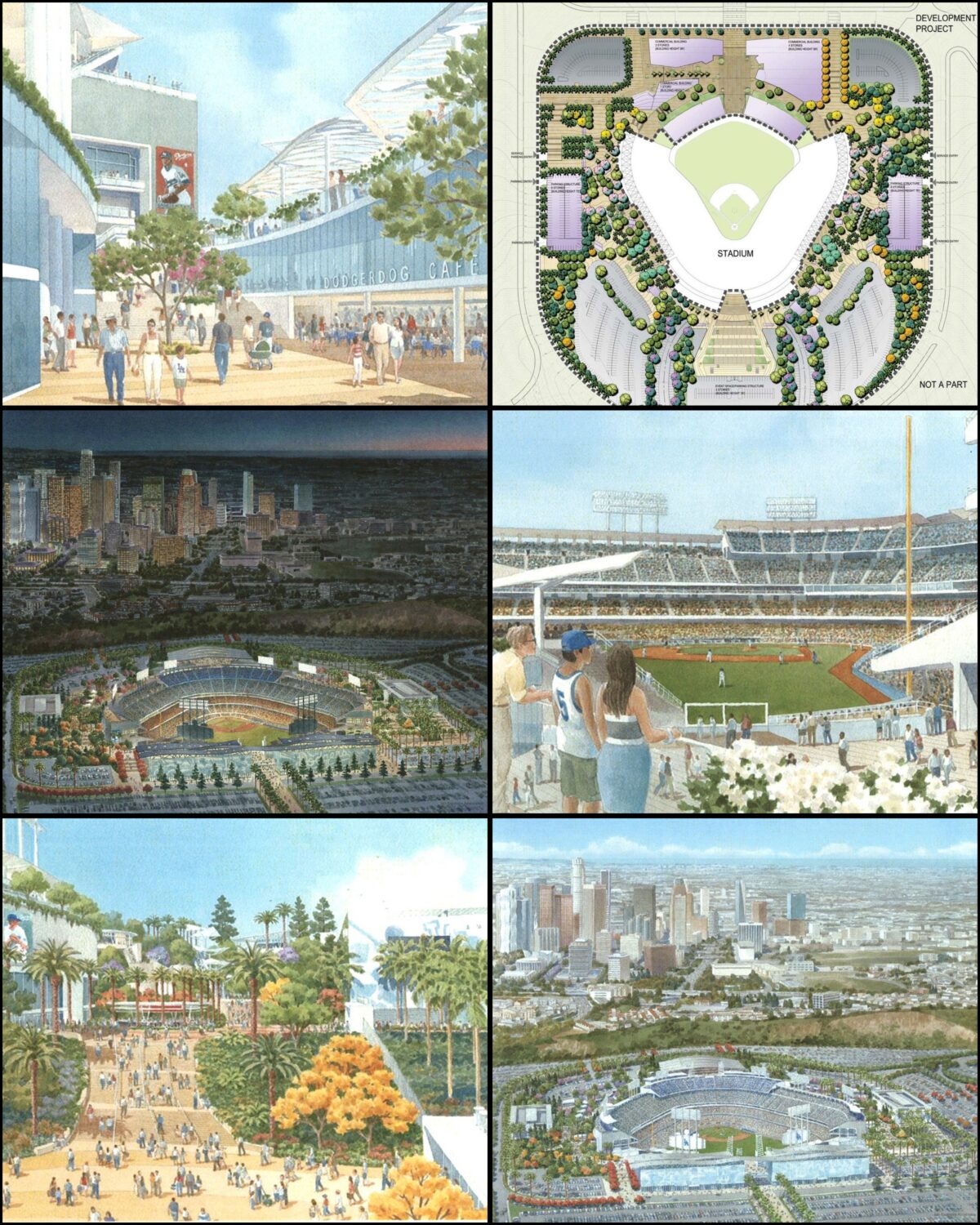
Mockup photos of the proposed plaza outside Dodger Stadium during Frank McCourt’s tenure of Dodgers owner. (via Johnson Fain)
McCourt’s project was called “Next 50,” and would have turned the parking lot into an open plaza, complete with a Dodger museum, a 20,000-square-foot Dodgers merchandise store, a cafe, a garden and two eight-level parking structures flanking the first and third base sides. The plans nearly mirrored what SoFi Stadium in Inglewood is constructing, as the Hollywood Park grounds will soon have residential and retail structures built outside the newly minted home of the Rams and Chargers.
The plans were publicly revealed through court documents related to the McCourt divorce and the renderings can still be found on the website of Johnson Fain, the firm that teamed with McCourt to design the extravagant parking lot plaza.
As McCourt lost ownership of the team and years passed, the “Next 50” project never came to fruition. Christensen, however, believes McCourt’s old plans are still at play.
“McCourt is hiding the ball here,” Christensen said. “It’s a project to unlock the development potential of the parking lots at Dodger Stadium. The project will not take a significant number of cars off the road, it will not result in significant greenhouse gas reductions, it will not be used for public transportation around the neighborhood. The use of the gondola for those purposes will be minuscule.”
Is there a secret purpose behind the gondola?
Despite inklings of what McCourt may or may not be planning for the stadium lot, Grannis said such plans done in secrecy would be a “very dumb move” and would violate laws relating to the California Environmental Quality Act (CEQA).
“The environmental laws, we’ve done a full CEQA analysis and that CEQA analysis has a prohibition against what’s called ‘piecemealing,’” Grannis said. “If this was to be used in that process, to leverage something else, it would be a piecemealing problem and we would not be successful in getting the gondola project.”
Grannis also explained that plans for permanent transportation are required in accordance with Dodger Stadium’s conditional use grant, which is reviewed by the Los Angeles Department of City Planning and asks for certain requirements and modifications to be made to the stadium, such as the center field plaza that debuted in 2021.
“The stadium operates as a conditional use permit,” Grannis said. “One of the conditions… is that there will always be an effort to pursue permanent transit to the stadium and it’s been there since 1962.”
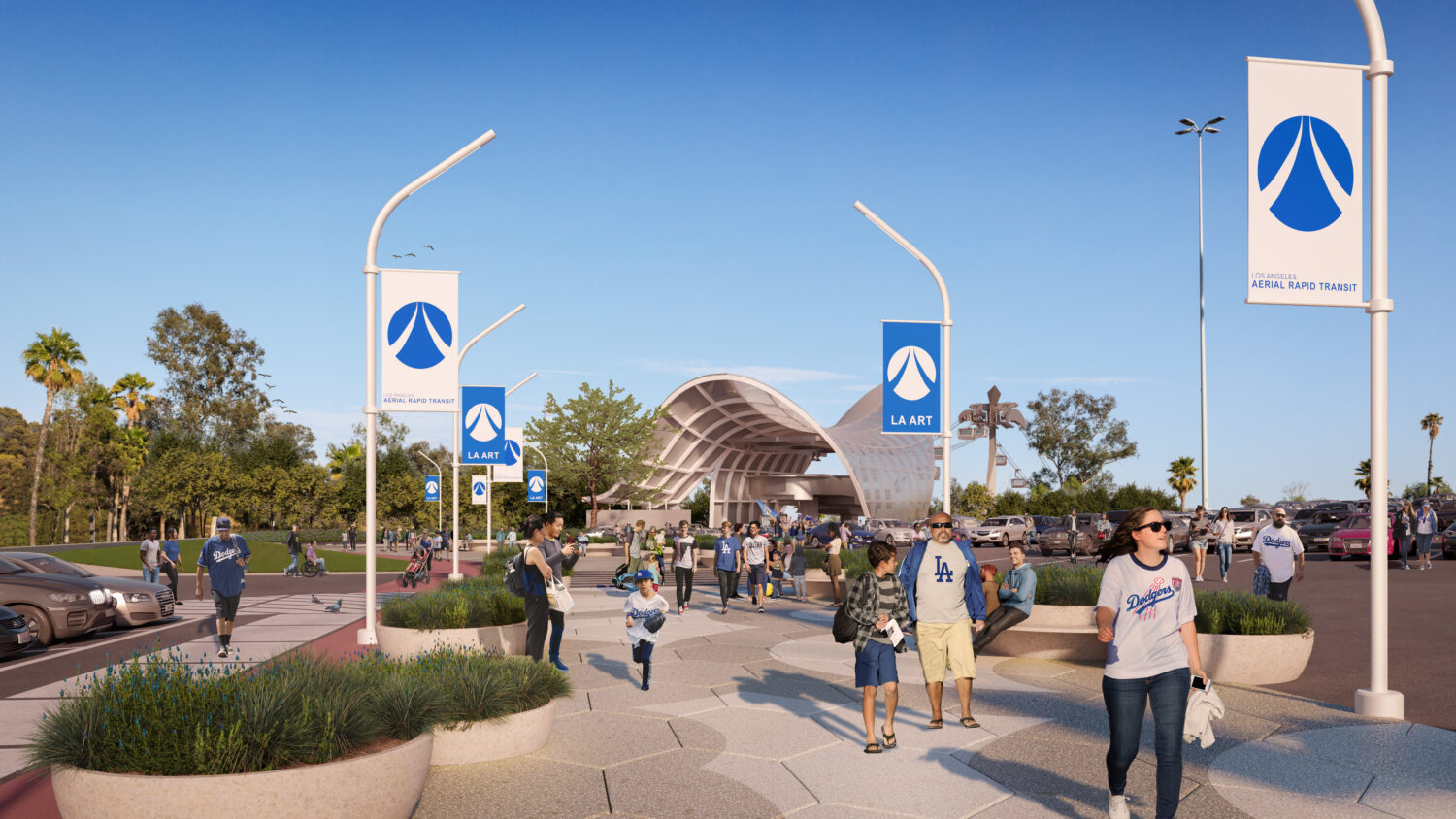
(Courtesy of LA ART)
Once you step aside from the politics and get into the logistics of the gondola itself, Grannis and ZET feel confident in its positive effects on the environment and enjoyment for Dodger fans, who would be allowed to ride it to games for free. ZET has pointed to past gondola projects worldwide, claiming reduced crime near Medellin, Colombia’s gondola rides. The organization also believes gameday traffic in the area will be reduced by up to 20% with drivers opting to use the gondola.
“Dodger Stadium is one of just three MLB stadiums that doesn’t have a transit connection,” Nathan Click, an organizer at ZET told L.A. Weekly. “Really, this is about a first/last-mile connection to one of the most traveled to destinations and corridors in downtown Los Angeles… and really getting people excited about ditching their cars and taking transit to the game.”
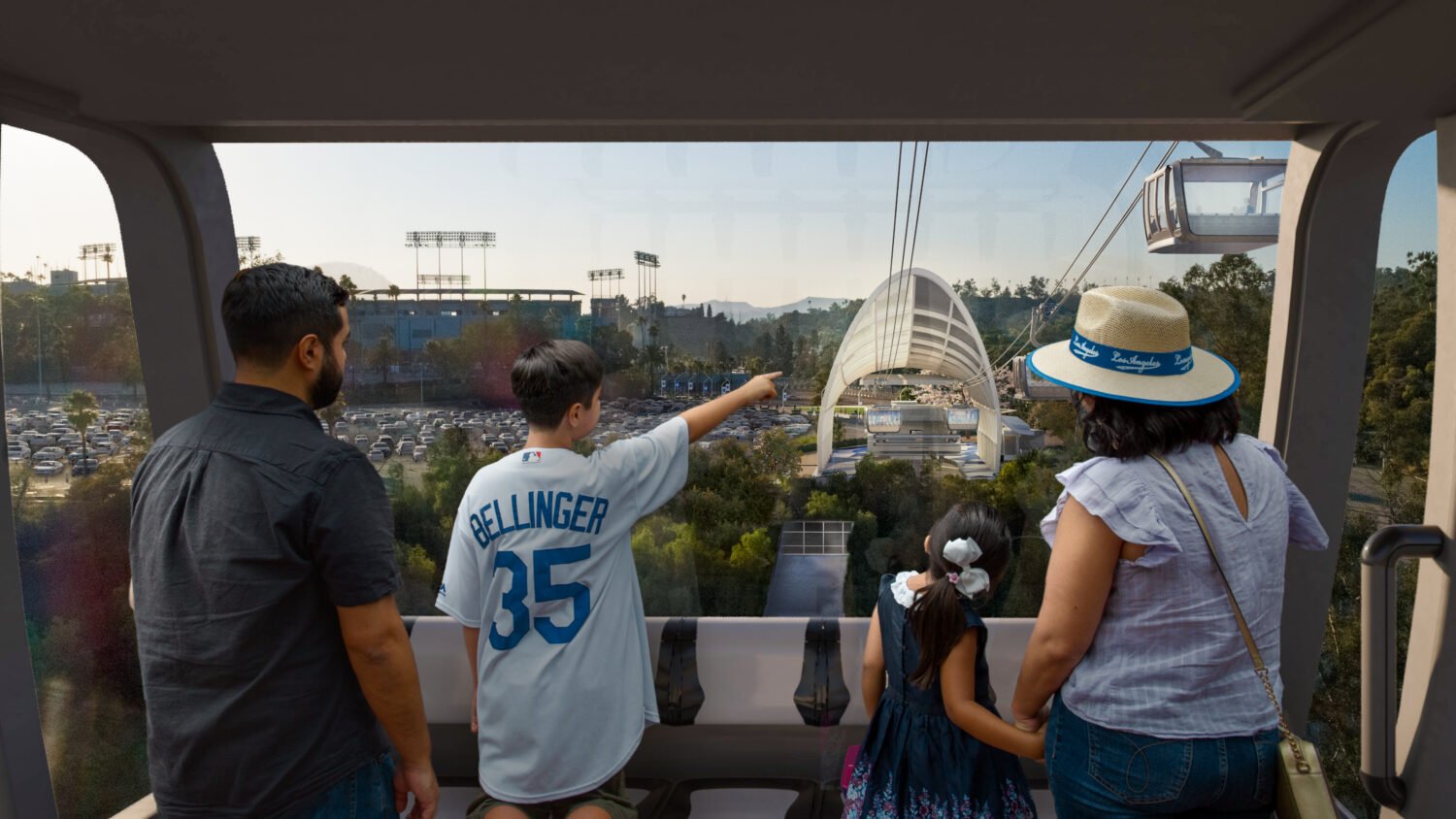
(Via LA ART)
As of now, the Los Angeles County Metro Board has its hands on the Draft Environmental Impact Report for the gondola project and must review all the written comments and concerns from Los Angeles residents before making a decision on whether or not to move forward.
When the board examined and discussed the gondola in September 2022, multiple board members expressed concerns about transparency and gentrification of some of the city’s core communities such as Chinatown.
Chinatown resident Phyllis Ling was vocal about her gondola fears, with the cabins potentially floating over her and her neighbors’ homes on a daily basis.
“I’ve been told it would go over my property,” Ling told L.A. Weekly. “It’s an impractical way to move a lot of people in and out of Dodger Stadium. It’s also very expensive and intrusive for the residents. It’s like a big gimmick and it’s being forced on us.”
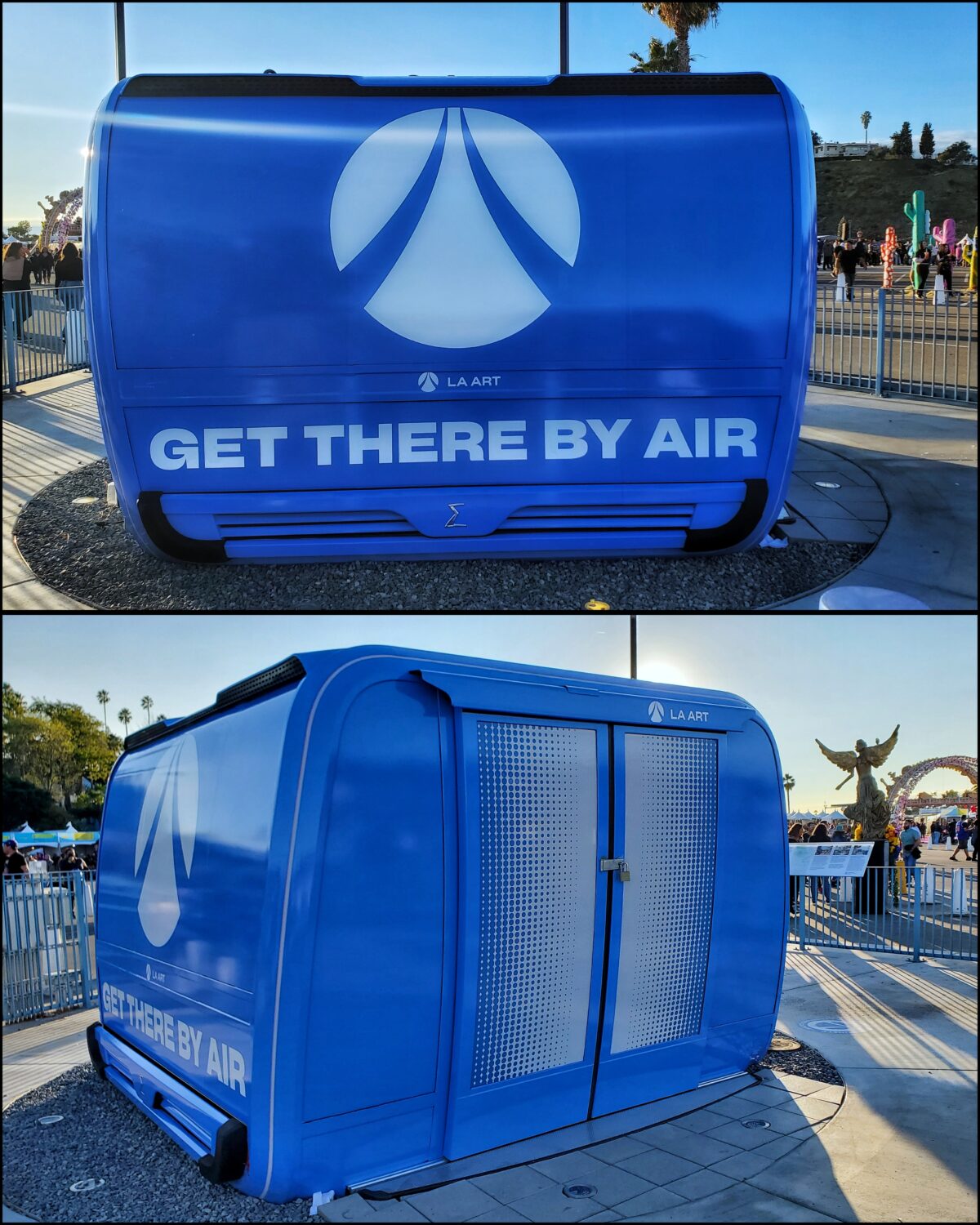
Dodger fans can take a look at a gondola cabin displayed in the Dodger Stadium parking lot. (Isai Rocha/L.A. Weekly)
Metro board member and L.A. County Supervisor Hilda Solis was among those who were concerned that the local communities were not being let into the plans well enough, to which ZET said it increased its canvassing efforts, providing flyers in multiple languages.
Supervisor Janice Hahn questioned how the gondola would affect the current “Dodger Stadium Express” shuttle, which currently transports fans to the stadium from Union Station, as she has been an advocate for keeping the shuttle going as an alternative to parking at the ballpark. Grannis said the shuttle and gondola can work in harmony.
“The more we can get zero-emission into the transport sector and the more choices… we can provide people, the better off we’re going to be,” Grannis said. “That means active transportation, that means public transit, that means everything from bicycling to scooters. We want that to be a safe, good, positive experience and that’s going to make a difference in the transport sector.”
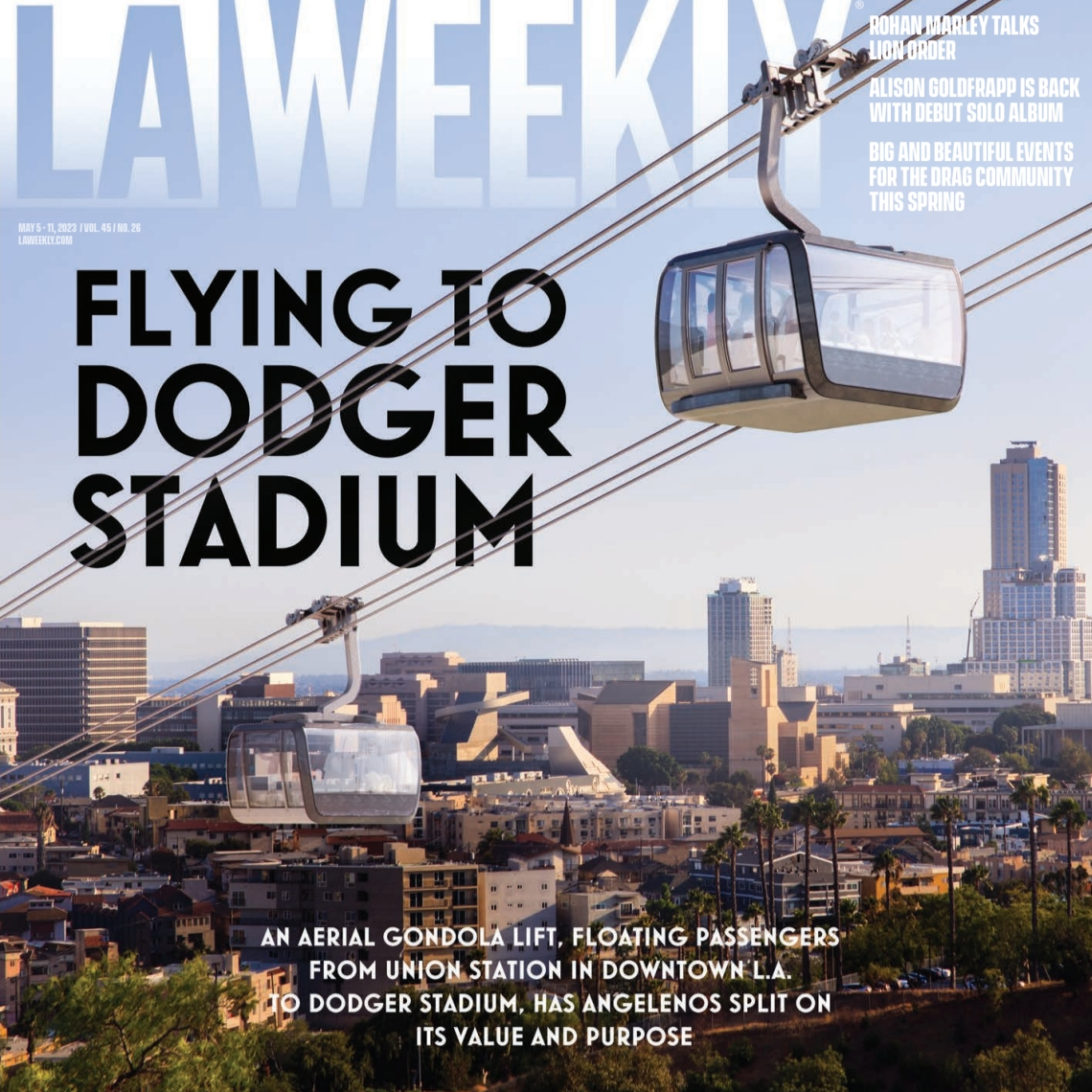
(As seen on the May 4 cover story for L.A. Weekly)
The fate of the gondola now rests in the hands of the L.A. Metro board, who would need to certify a final EIR and run it through the L.A. City Council.
ZET expects that to happen sometime this fall, marking the first giant step toward making the gondola a reality. Ultimately, the goal is to have the gondola ready and running by the 2028 Summer Olympics, which returns to Los Angeles for the first time since 1984.
“There is no urban gondola transit system in the United States,” Grannis said. “This would be the very first one, so you got to get it right.”
Advertising disclosure: We may receive compensation for some of the links in our stories. Thank you for supporting LA Weekly and our advertisers.

